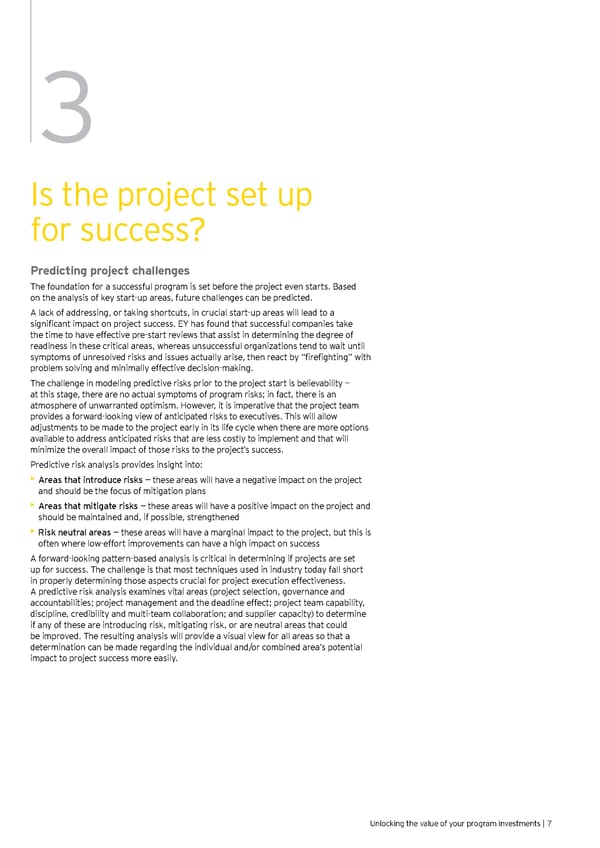3 Is the project set up for success? Predicting project challenges The foundation for a successful program is set before the project even starts. Based on the analysis of key start-up areas, future challenges can be predicted. A lack of addressing, or taking shortcuts, in crucial start-up areas will lead to a significant impact on project success. EY has found that successful companies take the time to have effective pre-start reviews that assist in determining the degree of readiness in these critical areas, whereas unsuccessful organizations tend to wait until symptoms of unresolved risks and issues actually arise, then react by “firefighting” with problem solving and minimally effective decision-making. The challenge in modeling predictive risks prior to the project start is believability — at this stage, there are no actual symptoms of program risks; in fact, there is an atmosphere of unwarranted optimism. However, it is imperative that the project team provides a forward-looking view of anticipated risks to executives. This will allow adjustments to be made to the project early in its life cycle when there are more options available to address anticipated risks that are less costly to implement and that will minimize the overall impact of those risks to the project’s success. Predictive risk analysis provides insight into: • Areas that introduce risks — these areas will have a negative impact on the project and should be the focus of mitigation plans • Areas that mitigate risks — these areas will have a positive impact on the project and should be maintained and, if possible, strengthened • Risk neutral areas — these areas will have a marginal impact to the project, but this is often where low-effort improvements can have a high impact on success A forward-looking pattern-based analysis is critical in determining if projects are set up for success. The challenge is that most techniques used in industry today fall short in properly determining those aspects crucial for project execution effectiveness. A predictive risk analysis examines vital areas (project selection, governance and accountabilities; project management and the deadline effect; project team capability, discipline, credibility and multi-team collaboration; and supplier capacity) to determine if any of these are introducing risk, mitigating risk, or are neutral areas that could be improved. The resulting analysis will provide a visual view for all areas so that a determination can be made regarding the individual and/or combined area’s potential impact to project success more easily. Unlocking the value of your program investments | 7
 Unlocking the Value of your Program Investments Page 8 Page 10
Unlocking the Value of your Program Investments Page 8 Page 10